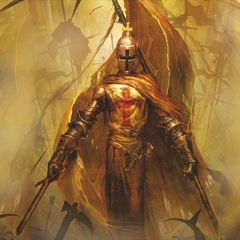From Simplicius’s latest offering comes the first of a statistic I have been very interested in for some time:
More than 75% of all injuries to Russian soldiers received during trench warfare were caused by attacks by Ukrainian UAVs.
These statistics were cited by Russian military doctors, whose article was published in the March issue of the Military Medical Journal of the Russian Defense Ministry.
Another 20% of the soldiers surveyed were injured as a result of artillery shelling, only 4% from small arms.
According to the military doctors’ report, the main Ukrainian means of destruction during trench warfare are small attack UAVs.
Drones have also affected the time it takes to evacuate the wounded for surgical care. It has increased threefold to 14.5 hours.
It is noteworthy that the Ukrainian military also says that most of the Ukrainian Armed Forces losses are now being suffered from Russian UAV strikes.
Although because the Russians have more artillery ammunition and more varied systems (such as FABs) it is likely that the % will not be as high.
He also adds a helpful table:

Given that these are results for almost 6,000 soldiers. I take it as statistically significant.
And probably as what will be likely to happen in any modern land-based conflict in modern warfare.
There are some principles that are possibly unique to Ukraine, but I still expect that, broadly speaking, small arms fire —when dealing with a modern nation’s military— will probably account for less that 10% of casualties in any case.
For those interested in my views, the conditions somewhat unique to Ukraine are as follows:
- It is the highest level of current technologically advanced warfare on a large scale on this planet. Possibly only China might have more advanced ways of entering large scale conflicts, but my expectation would be that Chinese strategies would be more likely to hinge on massive deployment numbers (regardless of if of people, machines, ships, drones, laser arrays, missiles, etc) as being the primary advantage. While Russian strategy certainly has this too as an element, I do not see it as being as pivotal as I would expect in the Chinese military. Russian operations I believe still have a higher level of human operator input and as such are potentially both more versatile, tactically flexible and when properly executed, more formidable in a scenario where both sides have equivalent number of force committed (be it people, machines, drones, etc). Chinese warfare would seem to me to be more likely to rely on overwhelming numbers as well as very advanced drone technology; making it potentially the scariest military on the planet. But back to the Russia-USA-by-Proxy war, the point is this is the theatre in which drones are currently being used as children use confetti at a wedding celebration. Smaller regional conflicts may not be as well stocked in the latest advances in silent flying death.
- The terrain is extremely bare for very large portions of the conflict. This reduces a lot of the fighting to modernised trench warfare where death comes from above mainly, even if not from warplanes, but rather artillery and drones. A more diversified terrain. Say with forest, jungles, rocky hills or mountains, or better yet, with both, may be somewhat less susceptible; certainly to artillery, but possibly also to drones to some extent.
What instead seems to be the new normal, at least with respect to drones in the actual field, is that the only at least temporary respite is underground.
The Ukrainian positions that held out the longest were fortified and mostly underground, returning modern warfare somewhat to a mix of WWI and medieval tactics with the added horrors of flying murderbots.
The encirclement of a fortified defensive position returns us to the days of the siege, and the need to have ground cover returns us to trench warfare at best and probably even more so to the underground vast tunnel networks of the tunnel rats of the Vietnam era.
Of course, eventually, even the underground facilities will be infested with smaller drones and robot dogs armed with automatic weapons or even the murderbots of Philip K. Dick’s dystopian future warfare fiction, which is fast becoming reality. Rat-sized AI driven bombs, not to mention wasp-sized assassin drone-swarms.
In the short run, a bunker may work for a while, but a few years from now, unless you have military level jamming technology AND military level automated gattling gun defences, AND EMP protected underground bases, either the wireless drones or the wired ones, will get you.
And that’s assuming you’re not a big enough target to merit one of the raptor drones firing an air to ground missile to crater your entire location from several kilometres away.
So… why do I say small arms are STILL not obsolete? Let me count the ways:
Pre-Occupation
- The enemy still has to eventually physically occupy the space he wants to conquer with troops. Once the troops enter the area, small arms fire can come into play again, especially if coming from a somewhat drone-protected position, like a bunker, or a networked underground maze with opportunity exits that give a sniper or small tactical team a location advantage for a brief and direct assault at recognised enemy assets within close range.
- Again, if playing dead, ambushes once the enemy moves in would be more reliant on small arms to take out the survivors of the initial trap (which may well be unmanned).
- A well thought out pre-emptive placing of special ops in locations that will become behind enemy lines, as the enemy advances, will be invaluable in causing harm, casualties and disruptions to the enemy, since these will be assaults coming from within their own sphere of control and/or from the rear. In such instances, the use of drones is mitigated by the special ops guy being among the enemy, since he is embedded behind their front lines.
Post-Occupation
- Same as the last point in the Pre-Occupation phase. At the point that the enemy military has “conquered” the native population, the “winner” now has only two options to a resistant population:
- Barricade themselves in fortified outposts and send out hostile patrols to root out “rebels” and “freedom fighters” which of course ensures the native population remains eternally hostile. The inevitable result of this approach, favoured by the American military, is ultimately defeat, as experienced in Korea, Vietnam, Iraq, and Afghanistan. The Yankees can claim victory as much as they like, and undoubtedly a higher body count, but ultimately they inevitably had to abandon the occupation.
- Take more of a “friendly” we are here to help approach, which tends to historically be a bit more the British approach. This has the advantage of getting at least some local co-operation, because there will always be some sell-outs, but also of having to expose more of your troops to local interaction and also infiltration. The down side is that you generally still tend to lose (Ireland, Afghanistan, Palestine) except it takes years or even decades. You get awfully nice stories of human drama for eventual streaming film series though, more dramatic than the more gung-ho Hollywood productions of Rambo-style films.
In both of the above cases of Post-Occupation, small arms, right down to the pistol and even the knife, can and will still cause casualties.
In short, modern warfare relies quite a lot more on the Commandos approach to battle , certainly for the weaker side in any nation vs nation conflict; or even civilian vs military one.
The primary actions on the battlefield being sniping, sabotage and subterfuge, precisely what the Green Beret, the Sniper, the Frogman and the Sapper excel at. And the primary actions in the enemy conquered and occupied territories, being the Sniper, and the Sapper, but even more so, the Spy.
In this context, for the discerning civilian who just wants to be left alone, and/or his friends and family that see it just as he does, and keeping in mind that given the situation of the West currently civil war may be even more likely than foreign occupation, there are some practical considerations you may want to take into account:
- A small handgun or even a sharp knife may become the primary tool, instead of a long-range rifle or assault rifle.
- A sewing circle of women might become the primary collector of intelligence instead of a sniper holed up in the mountains with a good pair of binoculars.
- Knowledge of local terrain with respect to drone vulnerability become paramount.
- Local community connections become imperative.
- Hand-to-hand unarmed combat becomes more relevant than it might have ever been since WWI at least.
- Subterfuge, politics, indirectness, and information gathering and manipulation is the primary weapon in modern warfare, but if or when it goes kinetic, playing possum may be the best option. Remember the adage… keep your enemies closer.
It’s a brand new world boys, and while apparently a new version of Commandos is coming out April 9th 2025 , there is indeed and even more realistic version out already, and being “played” on actual battlefields on Earth right now.
You might not want to sign up for that edition though. Apparently it’s brutally hard to win no matter which side you play on.
This post was originally published on my Substack. Link here







